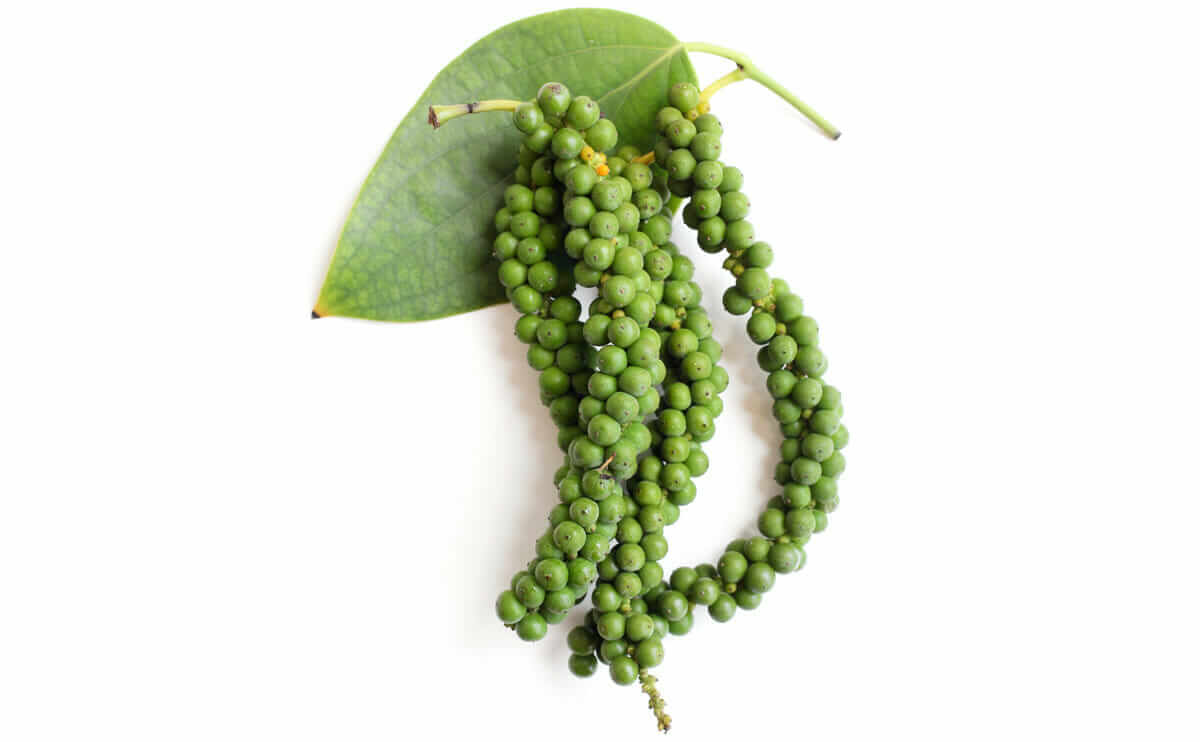Black, white or green - they are all peppercorns.

A companion to salt, these small, round black peppercorns seem to just arrive in our pepper mills. But where does black pepper come from? Black pepper, or Piper nigrum, is a perennial flowering vine discovered on the Malabar Coast of India, known today as Kerala. This tropical plant grows up to 30 feet high and is cultivated in India and Southeast Asia. Today, Vietnam is the world’s largest grower of pepper vines.
The fruit of the pepper plant, when dried, is called a peppercorn. A pepper plant takes four years to mature, but can be harvested for seven years afterward. You can tell that peppercorns are ready for harvest when one or two clusters of fruit on a low-hanging stem begin to turn red. Once harvested, they are dried by either the sun or a machine.
There are three kinds of peppercorns – black, white and green – all harvested from the same plant variety, but at various stages of ripeness, and processed in different ways.
[mf_editorial_break layout=”twocol” title=”Creamy Peppercorn Sauce” credit=”By Martyna Angell “]
1 tbsp butter
1 cup salt-reduced beef stock
3 tbsp green peppercorns
2 tsp cracked black peppercorns
â…› cup white or red wine
2 tsp brandy, port or sherry, optional
â…› cup fresh cream
1 tsp onion powder, optional
sea salt, to taste
3 tsp arrowroot (tapioca flour or cornflour as thickener)
2 tsp cold water
In a small saucepan melt butter over medium heat. Add green and black peppercorns and cook for 20 seconds in bubbling butter. Add stock, wine and bring to a boil, then simmer for 5 minutes to reduce the sauce and cook off the alcohol. Add cream and cook for a further 5 minutes for the sauce to thicken slightly. Whisk in onion powder, if using, and arrowroot (tapioca flour) mixed in with two teaspoons chilled water. Whisk for a further minute for the sauce to thicken.
Serve over steak, roasted chicken or schnitzel.
You can keep leftover sauce in the fridge for up to 2 days. Reheat on the stove top, adding a dash of extra water if necessary, or in a microwave.
[/mf_editorial_break]